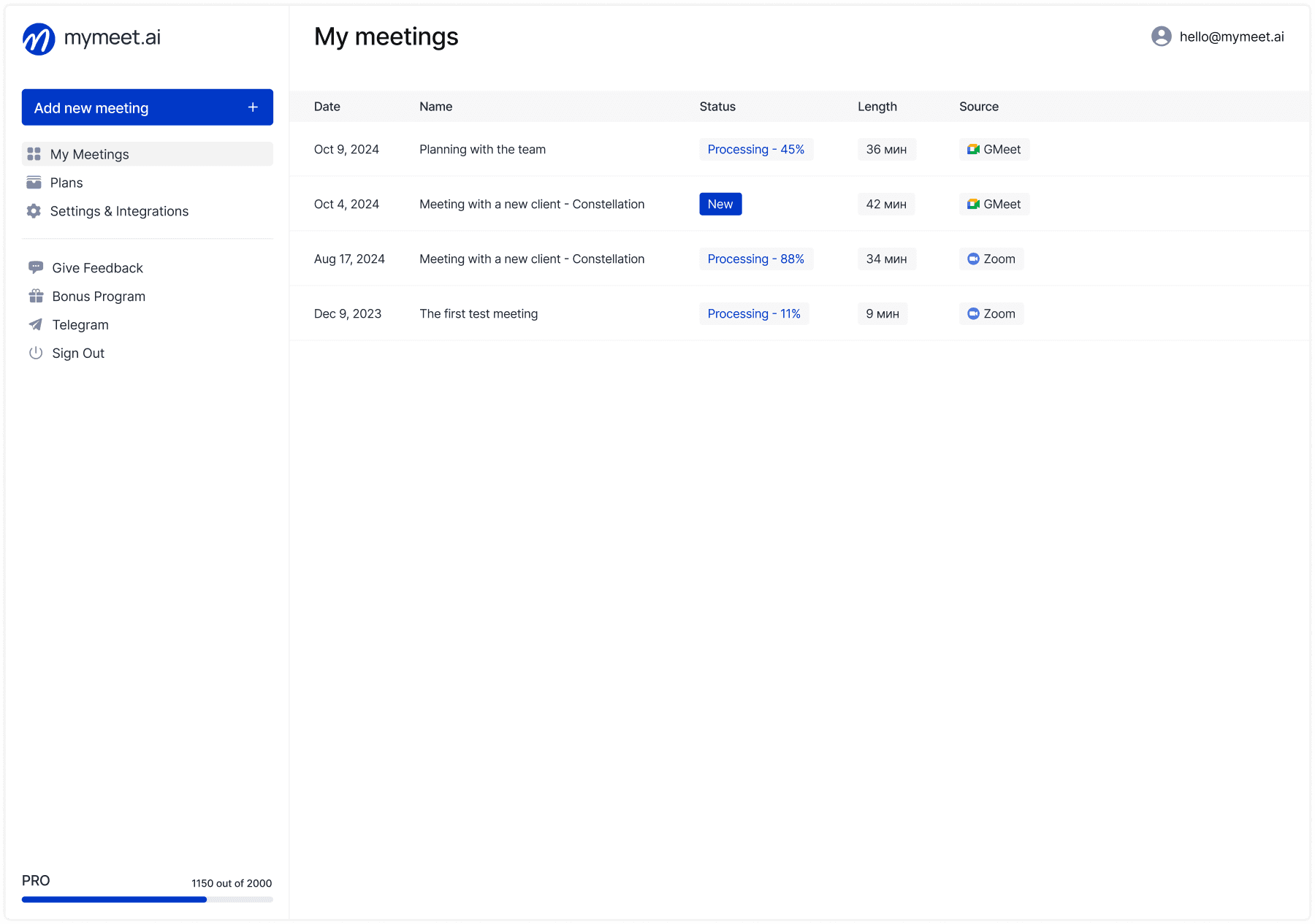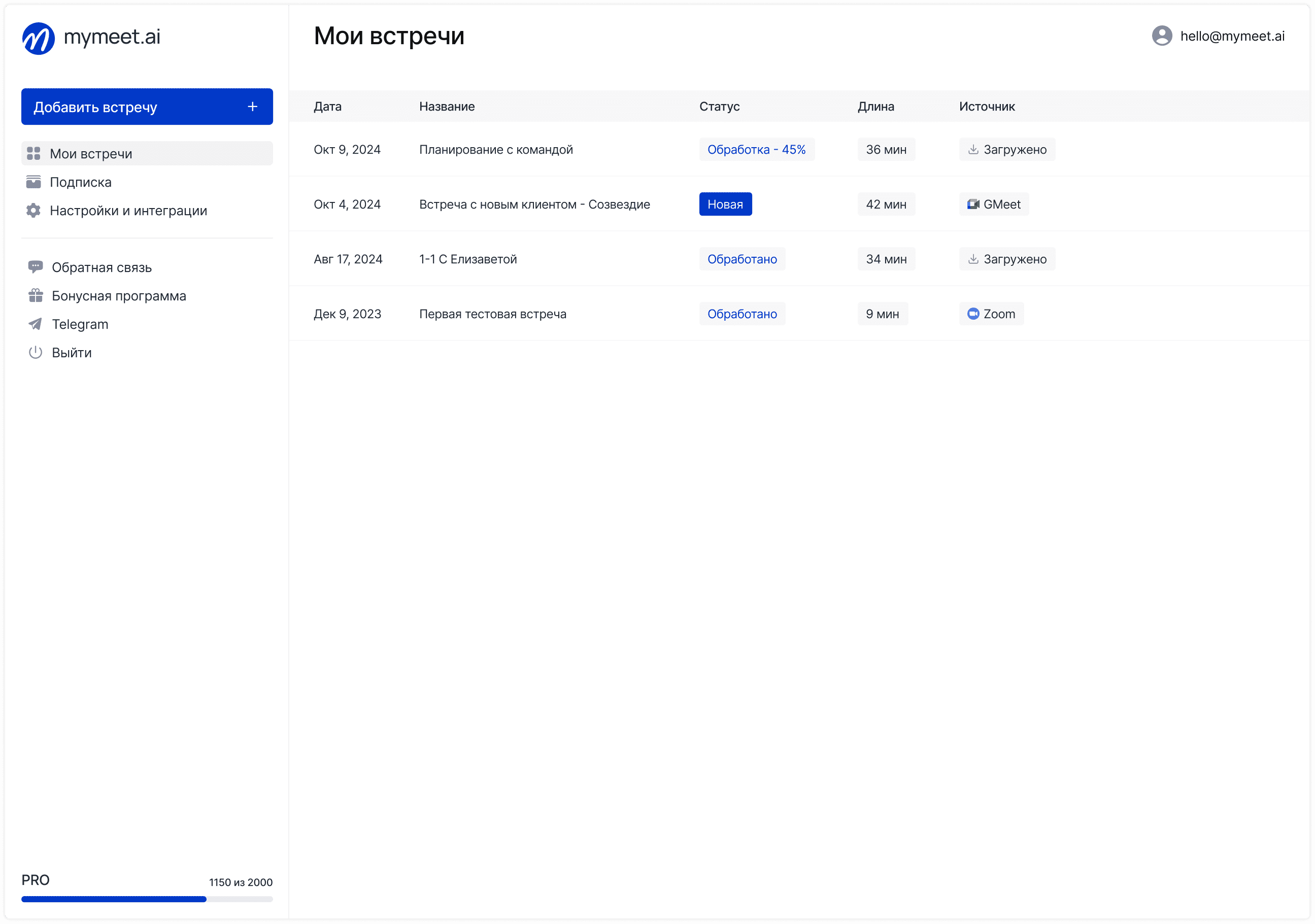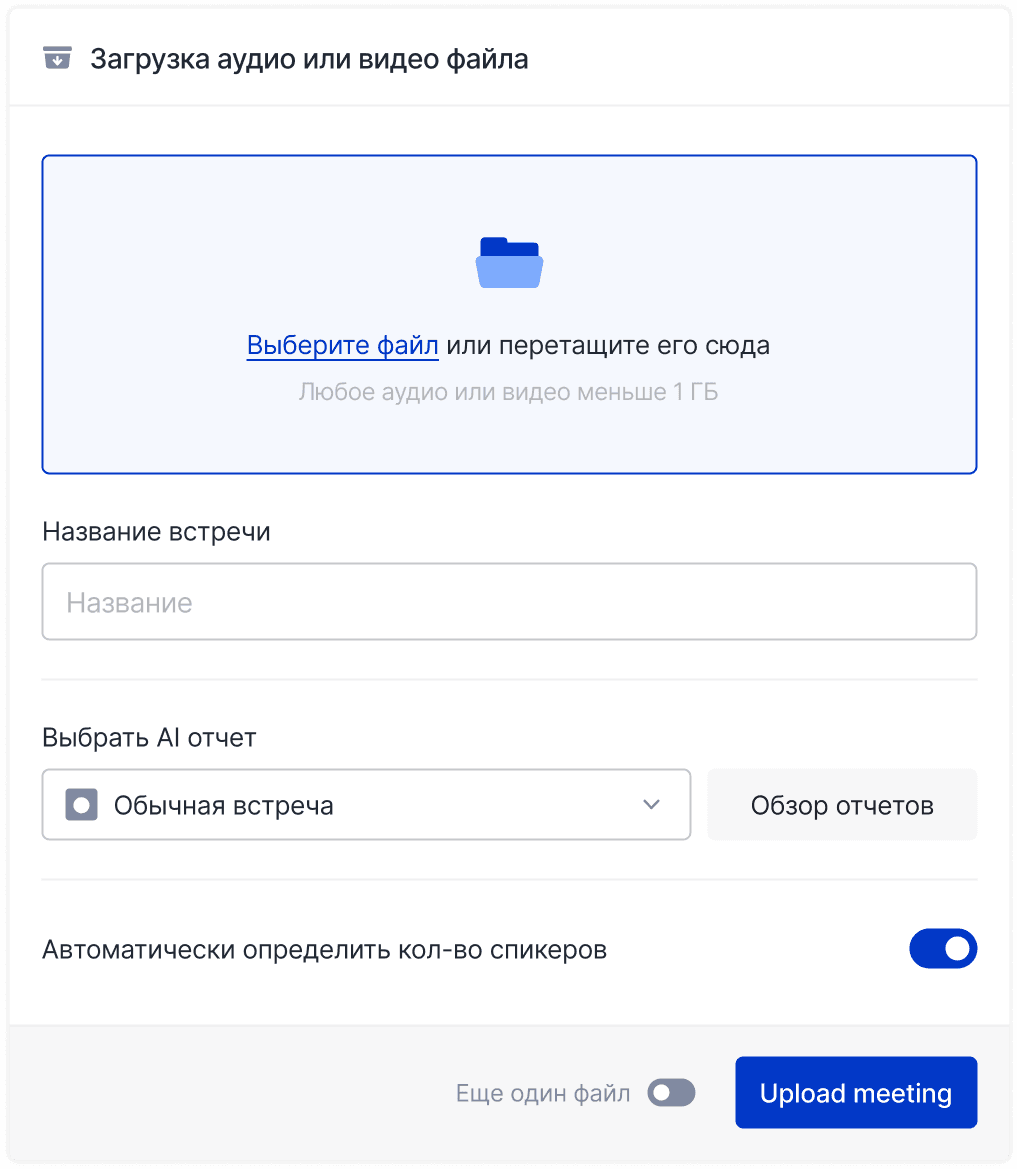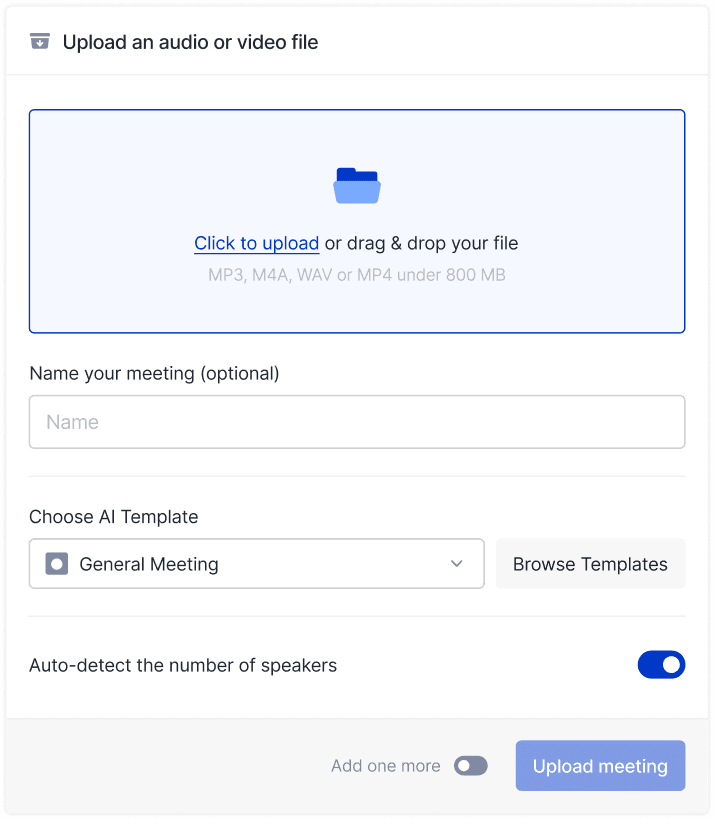Sales Mastery

Radzivon Alkhovik
Jul 21, 2025
The director of a manufacturing company hesitated for a long time before implementing a warehouse automation system. Initial investments seemed significant, and results uncertain. Six months after project launch, it became clear: the company saves dozens of hours weekly on routine operations, document errors decreased significantly, and employees gained opportunity to focus on business development.
The mymeet.ai team daily helps global companies evaluate automation investment effectiveness. Proper return on investment calculation determines project success and helps avoid costly mistakes.
What is Automation ROI

Automation ROI is a financial indicator of technological solution investment effectiveness. The indicator is expressed as a percentage and shows how much profit each dollar invested in automation brings.
Basic formula: (Automation Profit - Automation Costs) / Automation Costs × 100%. The formula's simplicity is deceptive — behind it lie complex processes of evaluating benefits and costs.
Automation ROI differs from traditional investments in time horizon. Effects appear gradually and accumulate over time. Many benefits are qualitative: employee stress reduction, customer experience improvement, business flexibility increase.
ROI Calculation Components
Correct calculation requires precise determination of all components: direct and indirect benefits, one-time and regular costs, time horizon.
Direct benefits are easier to measure: salary savings through employee time release, operational cost reduction, process acceleration. Indirect benefits are harder to evaluate: work quality improvement, personnel motivation increase, customer loyalty growth.
Costs include license fees, implementation and setup expenses, staff training, technical support. Hidden costs are often underestimated: employee adaptation time, temporary productivity decline, possible modifications.
Time horizon choice affects final indicators. Most experts recommend evaluating ROI for one to three years depending on project scale.
Visual ROI Calculation Scheme
A structured approach to ROI calculation helps account for all components and avoid errors when evaluating automation project effectiveness. The scheme shows relationships between different types of costs and benefits.
Automation ROI Calculation Components:
AUTOMATION COSTS
│── One-time
│ ├── Software licenses
│ ├── Implementation and setup
│ └── Staff training
└── Regular
├── Technical support
├── System updates
└── Additional training
AUTOMATION BENEFITS
├── Direct
│ ├── Employee time savings
│ ├── Operational cost reduction
│ └── Error quantity decrease
└── Indirect
├── Work quality improvement
├── Customer experience enhancement
└── Staff motivation growth
ROI = (Total Benefits - Total Costs) / Total Costs × 100%
Using this scheme when planning automation projects helps not forget important expense items and potential savings sources. Special attention should be paid to indirect benefits — they often constitute a significant part of total effect but require more complex evaluation methods.
Automation ROI Calculation Methods
Several approaches to ROI calculation exist, each having advantages and limitations. Method choice depends on business specifics and type of automated processes.
Main Automation ROI Calculation Methods:
Employee time savings method — calculation through released work hours
Cost reduction method — accounting for operational expense reduction
Revenue growth method — evaluating automation revenue increase
Combined method — combining all approaches for accurate picture
The time savings method is based on counting hours employees save through automation. These hours are multiplied by average work time costs including taxes and social contributions.
The cost reduction method focuses on operational expense reduction: error quantity decrease, consumable cost reduction, resource use optimization.
The revenue growth method evaluates how automation affects company earning ability: customer service acceleration, product quality improvement, ability to process more orders.
Step-by-Step Calculation Algorithm
Systematic ROI calculation approach helps avoid errors and obtain objective project effectiveness evaluation.
Stage | Description | Timeframe | Example Actions |
1. Current state recording | Measuring baseline indicators | 2-4 weeks | Process timing, error accounting |
2. Automation goal definition | Setting measurable tasks | 1-2 weeks | Time savings, error reduction |
3. Investment calculation | Evaluating all project costs | 1-2 weeks | Licenses, implementation, training |
4. Benefit forecast | Evaluating expected results | 2-3 weeks | Time savings, quality growth |
5. ROI calculation | Applying formula | 1 day | (Benefits - Costs) / Costs × 100% |
6. Result monitoring | Tracking actual data | Ongoing | Monthly efficiency reports |
The first stage requires detailed current process study: how much time employees spend on various operations, which errors occur most often, where bottlenecks arise.
Goal definition should be maximally specific. Instead of general formulations, clear numbers are needed: "reducing report creation time by 60%" or "decreasing document errors by 80%".
ROI Preparation Checklist
Proper preparation determines calculation accuracy and automation project success. Use this checklist for systematic preparation for effectiveness evaluation.
Automation ROI Calculation Preparation Checklist:
☐ Recorded baseline indicators of current processes
☐ Determined key metrics for measurement (time, errors, costs)
☐ Calculated full employee hour cost
☐ Compiled detailed project budget with 20-30% reserve
☐ Chosen time horizon for evaluation (1-3 years)
☐ Appointed responsible persons for data collection and monitoring
☐ Prepared templates for regular reporting
☐ Considered regulatory compliance requirements
Quality preparation at this stage saves weeks during project implementation and prevents costly mistakes. Companies that carefully prepare for ROI calculation achieve planned results in 85% of cases versus 40% for those who skip the preparation stage.
Factors Affecting Automation ROI
Project success depends on multiple factors, many controllable and optimizable for achieving maximum ROI.
Key Successful Automation ROI Factors:
Correct process selection — automating most labor-intensive operations
Team readiness — employee training and motivation for changes
Tool quality — reliability and functionality of chosen solutions
Implementation scale — user quantity and process coverage
Gradual expansion — phased implementation with cumulative effect
Process selection for automation determines project potential ROI. Greatest returns come from processes performed frequently, taking much time, prone to errors, and well standardized.
Human factors are often underestimated when planning automation projects. Staff resistance to changes can nullify technical advantages of most sophisticated systems.
Industry-Specific Calculation Features
Different industries have specific features affecting ROI calculation methods and expected results.
In manufacturing and logistics, main benefits relate to accounting accuracy improvement, defect quantity reduction, equipment loading optimization. ROI is calculated through material loss reduction and production cycle acceleration.
Service and consulting sectors benefit from client communication automation, resource planning, and report creation. ROI is measured through specialist time savings and service quality improvement.
Common ROI Calculation Mistakes
Understanding typical mistakes helps avoid inaccuracies in effectiveness evaluation and make more informed decisions.
Critical Automation ROI Calculation Errors:
Hidden cost neglect — forgetting training, setup, technical support
Savings overestimation — unrealistic automation expectations
Adaptation ignoring — not accounting for team adaptation time
Short planning horizon — evaluating only first year operation
Monitoring absence — not tracking actual results
Hidden costs can constitute a significant part of total investments. Employee time for learning new tools, possible downtime during implementation, process refinement necessity — all effects final ROI.
Savings overestimation is a common mistake among automation enthusiasts. Theoretical calculations often don't account for real work specifics.
How to Avoid Calculation Errors
Systematic project planning and monitoring approach helps minimize risks and achieve predicted results.
Create a detailed project budget including all cost types. Reserve 20-30% of the main budget for unforeseen expenses.
Use conservative estimates when forecasting benefits. Better to get ROI higher than expected than be disappointed in results. Focus on measurable benefits.
Plan phased implementation with intermediate control points. Successful pilot projects create the foundation for scaling.
mymeet.ai for Meeting Automation ROI Calculation

The mymeet.ai platform provides all necessary tools for accurate calculation and monitoring of business communication automation ROI.

Key mymeet.ai capabilities for ROI evaluation:
✅ Accurate calculation of time savings on meeting documentation and protocol creation
✅ Measuring corporate communication quality improvement through AI analysis

✅ Evaluating team efficiency growth through routine task automation
✅ Built-in ROI calculator for business communication automation
✅ Detailed reports on platform usage and achieved results
✅ HR system integration for accurate employee time cost accounting
✅ Meeting quality analytics and effective negotiation pattern identification

✅ Enterprise-grade security compliance and data protection
The platform automatically tracks time spent on meetings and calculates documentation automation savings. Built-in analytics tools allow seeing precise ROI figures in real-time and making informed decisions about automation scaling.
TechFlow Solutions Case: Measurable Automation Results
TechFlow Solutions implemented mymeet.ai to automate client meeting documentation and internal planning sessions. Before implementation, the team spent 50 hours monthly creating meeting protocols.
After mymeet.ai automation, documentation became completely automatic. AI analyzes client discussions, highlights technical requirements, and automatically creates team task lists.
Result: 50 hours monthly savings, which at average manager hourly cost allowed reducing operational expenses and directing freed time to client work and new service development.
Train employees to work with the AI assistant. Submit an application via the form for a corporate webinar.

ROI Calculation and Monitoring Tools
The modern market offers various solutions for calculating and tracking automation investment effectiveness.
Best Automation ROI Calculation Tools:
Tool | Complexity | Cost | Features | Suitable For |
Excel/Google Sheets | Low | Free/from $5/month | Customization flexibility | Small and medium business |
Power BI | Medium | From $10/month | Microsoft integration | Medium and large companies |
Tableau | High | From $70/month | Advanced analytics | Large corporations |
Industry solutions | Medium | Various | Specialization | Specific industries |
Built-in analytics | Low | Included | Automatic reports | All business sizes |
Excel Templates for ROI Calculation
Ready Excel templates allow quickly starting ROI calculation without additional specialized software investments.
Basic template includes sections for cost input, projected benefits, automatic ROI calculation, and payback graphs. Formulas are configured for different time periods and cost types.
Advanced templates contain modules for scenario analysis, risk assessment, comparison of different automation options. Macros automate report creation and presentations for management.
Practical ROI Calculation Examples by Industry
Real cases show how different industries benefit from automation and what ROI indicators are achievable.
Typical Automation ROI Indicators by Industry:
Manufacturing — savings through defect reduction and process acceleration
Trade — warehouse operation optimization and inventory management
Services — customer service automation and resource planning
IT development — development and testing process acceleration
Consulting — analytics automation and report creation
Real estate agency CRM automation reduced client database management time from 15 to 3 hours weekly per manager. With an 8-manager team, savings totaled 96 hours monthly, paying for system investment in 4 months.
Distribution company warehouse system implementation reduced shipment errors by 85% and doubled order processing speed. Return and complaint reduction provided additional savings not included in initial calculations.
Conclusion
Proper automation ROI calculation is the foundation of successful technology investments. Systematic cost and benefit evaluation approaches helps make informed decisions and achieve maximum investment returns.
Start with automating processes giving quick and measurable returns. Use conservative estimates and account for all cost types. Regularly monitor results and adjust approach.
Calculate your meeting automation ROI in 5 minutes using mymeet.ai calculator. 180 minutes of free testing will show precise time savings and team efficiency improvement.
FAQ about Automation ROI
How to calculate business process automation ROI?
ROI is calculated using formula: (Automation Savings - Automation Costs) / Automation Costs × 100%. Consider employee time savings, error reduction, process acceleration. Include all costs: licenses, implementation, training, support.
What is normal ROI for automation projects?
Good automation projects show ROI from 150% for first year usage. Simple solutions can give ROI above 300%, complex ERP systems — from 120-200%. Much depends on industry, implementation scale, and realization quality.
How long does automation take to pay back?
Simple automation tools pay back in 3-6 months, medium projects — in 6-12 months, comprehensive automation — in 12-24 months. Payback period depends on process complexity and implementation scale.
How to account for indirect benefits in automation ROI calculation?
Evaluate indirect benefits conservatively through measurable indicators: employee turnover reduction, customer loyalty growth, product quality improvement. Use employee and customer surveys, service quality metrics analysis.
What mistakes are made when calculating automation ROI?
Main mistakes: not accounting for hidden implementation and training costs, overestimating expected savings, ignoring team adaptation period, too short planning horizon, lack of actual result monitoring.
How to calculate automation ROI for small businesses?
Focus on simple, quickly payback solutions. Start with automating most labor-intensive processes: client database management, email marketing, meeting planning. Use conservative estimates and consider limited implementation resources.
What to include in process automation costs?
Include license costs, implementation and setup, staff training, technical support, integration with existing systems, modifications and updates. Don't forget employee time for mastering new tools.
How to measure qualitative improvements from automation?
Convert qualitative indicators to quantitative: stress reduction — through turnover, customer experience improvement — through NPS and repeat sales, quality improvement — through error and complaint quantities.
What tools to use for automation ROI calculation?
For basic calculations, Excel or Google Sheets with ready templates work. For advanced analytics, use Power BI or Tableau. Many automation systems have built-in efficiency monitoring tools.
How to calculate meeting and document management automation ROI?
Measure time employees spend creating meeting protocols, searching information in records, tracking tasks. Multiply time savings by hourly cost including taxes. Add benefits from documentation quality improvement and forgotten task reduction.
Radzivon Alkhovik
Jul 21, 2025







